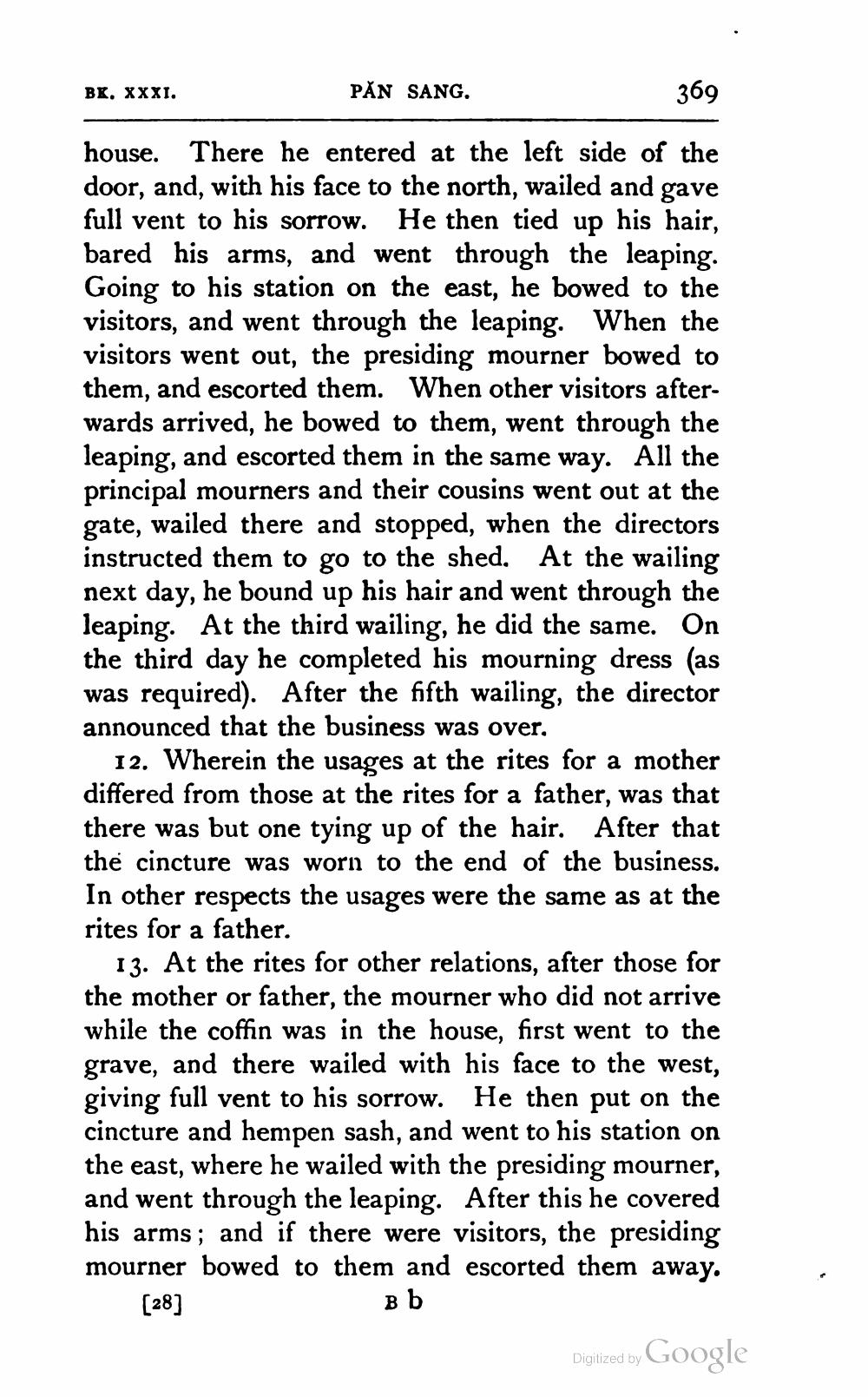________________
BK. XXXI.
PĂN SANG.
369
house. There he entered at the left side of the door, and, with his face to the north, wailed and gave full vent to his sorrow. He then tied up his hair, bared his arms, and went through the leaping. Going to his station on the east, he bowed to the visitors, and went through the leaping. When the visitors went out, the presiding mourner bowed to them, and escorted them. When other visitors afterwards arrived, he bowed to them, went through the leaping, and escorted them in the same way. All the principal mourners and their cousins went out at the gate, wailed there and stopped, when the directors instructed them to go to the shed. At the wailing next day, he bound up his hair and went through the leaping. At the third wailing, he did the same. On the third day he completed his mourning dress (as was required). After the fifth wailing, the director announced that the business was over.
12. Wherein the usages at the rites for a mother differed from those at the rites for a father, was that there was but one tying up of the hair. After that the cincture was worn to the end of the business. In other respects the usages were the same as at the rites for a father.
13. At the rites for other relations, after those for the mother or father, the mourner who did not arrive while the coffin was in the house, first went to the grave, and there wailed with his face to the west, giving full vent to his sorrow. He then put on the cincture and hempen sash, and went to his station on the east, where he wailed with the presiding mourner, and went through the leaping. After this he covered his arms; and if there were visitors, the presiding mourner bowed to them and escorted them away. B b
[28]
Digitized by
Google




